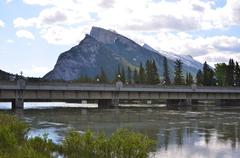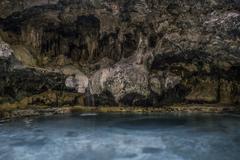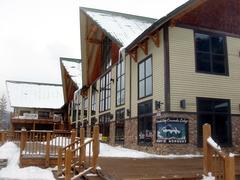
Banff National Park: Visiting Hours, Tickets, and Comprehensive Travel Guide
Date: 03/07/2025
Introduction: Banff National Park at a Glance
Nestled in the heart of the Canadian Rockies, Banff National Park is not only Canada’s oldest national park but also a globally recognized symbol of natural beauty and conservation. Established in 1885, Banff encompasses 6,641 square kilometers of pristine wilderness—home to turquoise glacial lakes, dramatic mountain ranges, abundant wildlife, and centuries of cultural history. As a UNESCO World Heritage Site, Banff is a premier destination for outdoor adventure, historical exploration, and cultural enrichment, attracting millions of visitors from around the world each year (Banff & Lake Louise Tourism; banff.ca).
This guide offers a detailed overview of Banff’s history, practical visitor information, top attractions, accessibility, travel tips, and sustainable tourism practices to help you plan a memorable and responsible visit.
Table of Contents
- Introduction
- Historical Overview
- Visitor Information
- Top Attractions and Activities
- Sustainable Tourism and Conservation
- Frequently Asked Questions (FAQ)
- Conclusion and Visitor Recommendations
- References
Historical Overview
Indigenous Presence and Early History
Long before the establishment of Banff National Park, the region was the traditional territory of several Indigenous Nations, including the Stoney Nakoda, Kootenay, Kainai, Peigan, Siksika, Tsuu T’ina, and the Métis. For thousands of years, these communities relied on the land for sustenance, ceremony, and trade. The hot springs in particular were revered for their healing properties. The park lies within the boundaries of Treaties 6, 7, and 8, and efforts are ongoing to restore Indigenous stewardship and cultural presence in the park (Banff & Lake Louise Tourism).
Discovery of the Hot Springs and Park Establishment
Banff’s modern history began in 1883 when Canadian Pacific Railway workers discovered natural hot springs on Sulphur Mountain. The Canadian government soon recognized the springs’ tourism potential and set aside a 26-square-kilometer reserve, establishing Canada’s first national park in 1885, initially called the “Rocky Mountains Park of Canada” (Canada Rail Vacations).
The Role of the Canadian Pacific Railway and Early Tourism
The Canadian Pacific Railway (CPR) was instrumental in Banff’s development, making the area accessible and building iconic structures like the Banff Springs Hotel (opened 1888) and the Chateau Lake Louise. These luxury hotels attracted affluent tourists from around the world, and Banff quickly became a renowned resort and spa destination (Wild Albertan).
Architectural and Cultural Milestones
The Banff Springs Hotel, known as the “castle on the hill,” remains a symbol of Banff’s heritage. The town’s development included notable structures like the King Edward Hotel and the Frank Lloyd Wright-designed pavilion. Banff also became an arts and culture hub with the founding of the Banff School of Fine Arts in 1933 (Wild Albertan; Banff.ca).
Expansion, Conservation, and UNESCO Recognition
Over the 20th century, Banff National Park expanded to its current boundaries and became a leader in conservation. In 1984, it was designated a UNESCO World Heritage Site for its “exceptional natural beauty” and ecological importance. Conservation efforts protect 56 species of mammals and a diverse range of flora and fauna (Canada Rail Vacations; Banff & Lake Louise Tourism).
Social and Economic Shifts
The park’s history reflects a balance between tourism growth and local needs. Early infrastructure often prioritized visitors, but recent years have seen increased focus on community engagement, sustainability, and Indigenous partnership (Wild Albertan).
Historic Sites and Museums
Explore Banff’s history at the Banff Park Museum (est. 1895), Cave and Basin National Historic Site (birthplace of Canada’s national parks), and other landmarks such as the Bankhead Ghost Town and Skoki Lodge (Park Pilgrim; Lonely Planet).
Visitor Information
Visiting Hours and Tickets
- Park Hours: Open 24/7 year-round.
- Visitor Centers: Typically 8:30 AM – 5:00 PM (seasonal variations).
- Key Attractions: Check individual sites for exact hours; e.g., Cave and Basin National Historic Site is usually open 9:00 AM – 5:00 PM (Parks Canada).
- Park Passes: Required for entry and available as daily, group, or annual passes. Purchase online, at park gates, or visitor centers (Banff National Park Entry Fees).
- Daily Pass (adult): $10.50 CAD
- Annual Pass (adult): $69.25 CAD
- Youth (17 & under): Free
- Attractions: Some sites and tours require additional tickets; book in advance, especially in summer.
Accessibility
Banff is committed to inclusive travel:
- Wheelchair-accessible paths at major sites like Lake Louise and Vermilion Lakes.
- Roam Transit offers accessible public buses between Banff, Lake Louise, and Canmore (Park Pilgrim; Roam Transit).
- ASL tours available by request.
- Special parking access for visitors with accessibility tags (The Banff Blog).
Travel Tips and Best Times to Visit
- Summer (June–September): Warm weather, full trail access, and festivals. Book accommodations early.
- Fall (September–October): Fewer crowds, beautiful foliage.
- Winter (December–March): Ideal for skiing and snow sports; cold temperatures.
- Shoulder Seasons: Lower prices, quieter experience.
- Packing: Dress in layers, bring rain gear, and carry bear spray.
- Altitude: Banff sits at 1,383 meters (4,537 ft); take time to acclimatize.
Transportation and Accommodation
- Getting There: Drive via Trans-Canada Highway 1 (Calgary to Banff ~1.5 hours). On-It Regional Transit and shuttle services available.
- In the Park: Use Roam Transit and Parks Canada shuttles for key destinations like Lake Louise and Moraine Lake (reservations recommended).
- Parking: Limited during peak periods; use BanffNow app for updates.
- Lodging: Range from luxury hotels to campgrounds; book early, especially in summer (Banff National Park Entry Fees).
Top Attractions and Activities
Iconic Natural Attractions
- Lake Louise: World-famous for its turquoise waters and glacier views. Summer: hiking, canoeing; winter: ice skating (Fresh Adventures).
- Moraine Lake: Accessed by shuttle from late May to October; known for dramatic Valley of the Ten Peaks (The Banff Blog).
- Banff Upper Hot Springs: Soak in mineral waters with mountain views (Banff Hot Springs).
- Johnston Canyon: Year-round hiking to waterfalls; winter ice walks available.
- Sulphur Mountain Gondola: Ride to summit for panoramic views and boardwalk experiences.
- Icefields Parkway: Scenic drive to Jasper with glaciers, lookouts, and wildlife (Banff Awaits).
Outdoor Activities
- Hiking: Over 1,600 km of trails, including Lake Agnes Tea House and Plain of Six Glaciers (The Banff Blog).
- Canoeing & Kayaking: Available at Lake Louise, Moraine Lake, and Vermilion Lakes.
- Wildlife Viewing: Spot bears, elk, moose, and more—observe from a safe distance (The Tourist Checklist).
- Mountain Biking & Horseback Riding: Numerous trails and guided tours.
- Climbing & Via Ferrata: Family-friendly guided climbs at Mount Norquay.
- Winter Sports: Skiing, snowboarding, ice skating, and snowshoeing from December to March.
Cultural and Historic Sites
- Banff Springs Hotel: National Historic Site and symbol of Banff’s heritage.
- Banff Park Museum: Historic wildlife and conservation exhibits (The Canadian Encyclopedia).
- Cave and Basin: Interactive displays on park origins and Indigenous history.
- Banff Centre for Arts and Creativity: Hosts music, theatre, and film festivals.
Festivals and Events
- Canada Day (July 1): Music, parades, and wildlife-friendly fireworks (Banff Awaits).
- Banff Mountain Film and Book Festival: Celebrating adventure and mountain culture each autumn.
- Banff Summer Arts Festival: Music, theatre, and visual arts performances.
Sustainable Tourism and Conservation
Banff National Park is a global leader in sustainable tourism and ecological stewardship. Entry fees support conservation projects, including wildlife corridors, habitat restoration, and bison reintroduction programs (Mundo Wanderlust; Canada.ca). Visitors are encouraged to use public transit, follow Leave No Trace principles, and participate in educational programs (Parks Canada).
Frequently Asked Questions (FAQ)
Q: What are Banff National Park’s visiting hours?
A: The park is open 24/7 year-round. Visitor centers and attractions operate typically 8:30 AM–5:00 PM; check sites for updates.
Q: How do I purchase tickets?
A: Buy park passes online, at entry gates, or visitor centers. Some attractions require additional tickets.
Q: Is Banff accessible?
A: Yes, with accessible paths, facilities, and public transit. Check individual sites for details.
Q: When is the best time to visit?
A: Summer offers full access and events; fall is quieter with beautiful colors; winter is ideal for snow sports.
Q: Are pets allowed?
A: Pets are permitted in certain areas, leashed. Restrictions apply to some trails and shuttle services.
Conclusion and Visitor Recommendations
Banff National Park seamlessly blends natural grandeur, cultural richness, and innovative conservation. By planning ahead—securing the appropriate park passes, checking visiting hours, arranging transportation, and respecting accessibility and sustainability guidelines—you can enjoy a safe, memorable, and responsible adventure.
Download the Audiala app for real-time updates, guided tours, and insider tips. Explore our related resources for hiking trails, wildlife safety, and seasonal events. Follow us on social media to stay informed and inspired for your Banff journey.
References
- Banff & Lake Louise Tourism
- Canada Rail Vacations
- Wild Albertan
- Banff.ca
- Park Pilgrim
- Lonely Planet
- Banff National Park Entry Fees
- Parks Canada
- Banff Awaits
- Trafalgar
- Banff Everyday
- Mundo Wanderlust
- The Banff Blog
- Fresh Adventures
- Divergent Travelers
- Travellers Worldwide
- Insight Vacations
- Park Pilgrim
- Roam Transit
- Canada.ca
- Banff Hot Springs
- The Canadian Encyclopedia
- The Tourist Checklist






